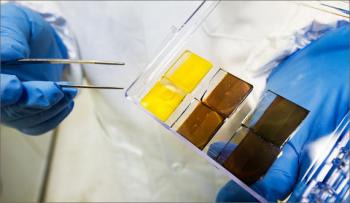Perovskite/silicon tandem solar cell achieves record efficiency
Researchers from Helmholtz-Zentrum Berlin (HZB) and the university École polytechnique fédérale de Lausanne(EPFL) in Switzerland have combined a silicon heterojunction solar cell with a perovskite solar cell monolithically into a tandem device and reached a record efficiency of 18%, stating it has the potential to reach 30% after additional modifications.
![]()
Designing such silicon-perovskite tandem cells can be challenging, as perovskite cells tend to require coating onto titanium dioxide layers, which must first be sintered at around 500 °C. The amorphous silicon layers that cover the crystalline silicon wafer in silicon heterojunction degrade at this temperature. Now the team from EPFL and HZB has managed to overcome hurdles and manufacture this kind of monolithic tandem cell, by depositing a layer of tin dioxide at low temperatures instead of using titanium dioxide. A thin layer of perovskite could then be spin-coated onto this intermediate layer and covered with hole-conductor material. The team also used a transparent protective layer to avoid the metal oxides sputtering and consequently destroying the perovskite layer and hole-conductor material.




